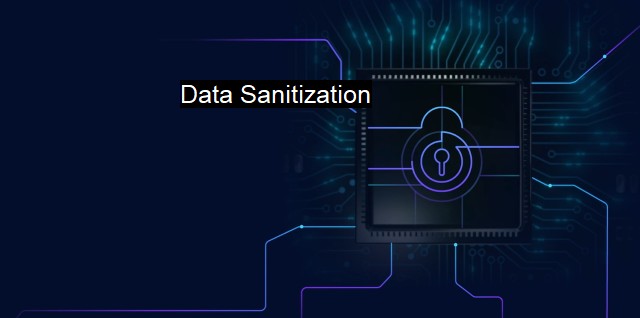What is Data Sanitization?
The Importance of Data Sanitization for Securing Sensitive Information in the Digital World
Data sanitization, within the cybersecurity and antivirus industry, refers to the conscientious process of deliberately, permanently, and irreversibly destroying or removing data stored on a memory device to make it unrecoverable. This process ensures that the data cannot be accessed by unauthorized users when an asset is repurposed, decommissioned, or disposed. It goes beyond simple file deletion or formatting, where information is merely marked for deletion but not truly erased and can be restored using specialist software.Applications for data sanitization exist across numerous industries but are most closely associated with IT asset disposition (ITAD) and end-of-life data management. Its relevance bears weight in any sector where sensitive data must be handled and disposed of with due care – which covers everything from governmental and military organizations to retail businesses and data centers. Today, given the prevalence of data breaches and heightened awareness about privacy, effective data sanitization has emerged as a significant, practical dimension of economic and national security policy.
Data sanitization processes must create an environment wherein data recovery is infeasible even with the help of advanced forensic tools. It serves as a vital component of a holistic data governance strategy. Its effectiveness not only reduces the potential for data-related crises such as identity theft and financial fraud but also safeguards against corporate espionage and the inadvertent distribution of proprietary information.
Practically, data sanitization essentially involves three approaches: physical destruction, cryptographic erasure, and data erasure. The physical destruction method includes degaussing (generating a magnetic field to disrupt stored data), pulverizing, melting, or incinerating storage devices. these methods make the hardware non-reusable. Cryptographic erasure involves encryption of data until the encryption keys are effectively destroyed. While this method leaves the hardware intact, completely eradicating encryption keys can be a complicated task.
The most commonly implemented method is data erasure, which typically does not harm the physical device. Data erasure solutions leverage different standards like the NIST 800-88 or DoD 5220.22-M, which oversee the number of times data overwrite is performed and verification. Consequently, hardware can be safely resold or donated subsequent to the data sanitization process without worrying about residual data that could be misused.
While data protection dominates the headlines in regards to cybersecurity, more companies are increasingly giving attention to data sanitization as a complement to these activities. As the regulatory landscape around consumer privacy continues to evolve, failings in data sanitization can lead to hefty non-compliance penalties.
Importantly, effective data sanitization needs to deal with "data remanence." Data remanence is the digital equivalent of DNA left behind at a crime scene. Even after data is presumed to be erased or overwritten, information can be reconstructed from the residual data using specific tools and techniques.
So, as cybersecurity threats continue to evolve and as data continues to be a valuable commodity for businesses and governments alike, it is crucial to implement stringent data sanitization measures to protect sensitive data effectively. This practice not only shields valuable digital assets from unauthorized prying eyes but also establishes robust support for regulatory compliance, reputation management, and most importantly, trust in a data-driven, digitally-enmeshed world.

Data Sanitization FAQs
What is data sanitization?
Data sanitization is the process of completely and permanently removing sensitive information from a system or storage device. This process ensures that the data cannot be recovered or accessed by unauthorized users.Why is data sanitization important for cybersecurity?
Data sanitization is essential for cybersecurity because it prevents sensitive information from being accessed or stolen by cybercriminals. If data is not adequately sanitized, it can be recovered and used to compromise personal or organizational security.What methods are used for data sanitization?
There are several methods of data sanitization, including physical destruction, data wiping, and data overwriting. Physical destruction involves physically destroying the storage device, whereas data wiping involves overwriting the data with zeros or random characters. Data overwriting involves multiple passes of overwriting data to ensure complete deletion.When should data sanitization be performed?
Data sanitization should be performed whenever sensitive data is no longer needed or when a storage device is being retired or repurposed. It should also be performed before donating, selling, or throwing away a device to prevent any data from being accessed by unauthorized individuals.| | A | | | B | | | C | | | D | | | E | | | F | | | G | | | H | | | I | | | J | | | K | | | L | | | M | |
| | N | | | O | | | P | | | Q | | | R | | | S | | | T | | | U | | | V | | | W | | | X | | | Y | | | Z | |
| | 1 | | | 2 | | | 3 | | | 4 | | | 7 | | | 8 | | |||||||